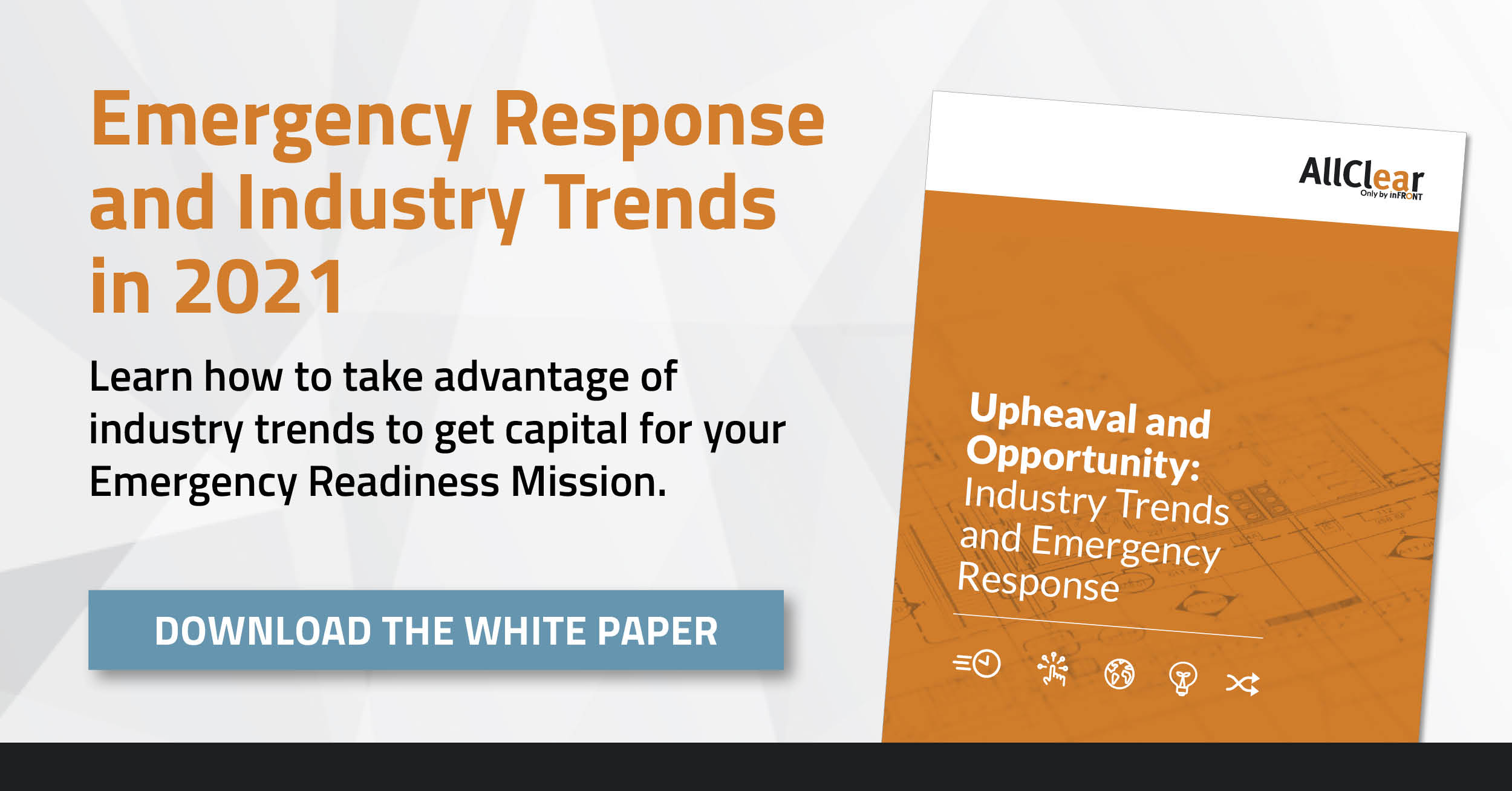To achieve these benefits of digital transformation, we need funding. That takes us back to the challenge of winning budgetary support for your projects. For a long time, emergency response hasn’t stacked up well against other budget priorities because it isn’t a profit center. I think we’re entering a period of re-increasing support for investments in emergency response and here’s why. First, emergency readiness and response is stored up an abundance of affordable quick wins for digital transformation. Companies are backing their calls for automation by incentivizing their executive leadership and management to drive it forward.
Due to its history and culture, emergency response has a solid backlog in digitization opportunities like the ones I just mentioned that are manageable in cost and scope. It’s a good time to bring these forward because leadership is looking for momentum in the digital transformation journey. This will enable your organization to notch low-risk, high-value wins that move the company forward. Next, technology is becoming more affordable. The nature of technology is that it’s becoming less expensive and more reliable over time. This is happening today, so there’s a macro trend that is helping. Also, technology providers are not blind to the financial pressure in our industry, so they’re offering multiple procurement models.
For example, since capital seems harder and harder to come by, it’s becoming easier to find vendors that offer access to their products via subscription models, which converts the bigger capital budget item into a lower monthly expense on the operating budget. This takes the pressure off of having to compete for capital dollars. Finally, the rise of socially conscious investing represents an opportunity for attracting funding for emergency response projects. If you haven’t heard of ESG investing yet, you will soon. In short, it is a trend in the capital markets to evaluate investments based upon the company’s score in environmental, social and governance practices.
Before investing their capital in a company, fund managers evaluate the company on a scorecard of environmental stewardship, positive social impact, and quality of their corporate governance. Companies can’t just compete on shareholder value through their profitability and balance sheet, it must also compete in these non-financial metrics. When I say a trend, I should probably call it a wave. The global pandemic kicked this trend into high gear and it is growing at a breathtaking pace. By 2025, that’s less than four years from now, it’s expected that a third of all assets under management, which is about $53 trillion of the 140 trillion, is under management currently, sorry in 2025 will be evaluated under these criteria.
For companies that are an industry, that represents an obvious challenge in raising capital because of low scores for the E, which we can see driving the dramatic strategy shifts of some players toward carbon neutrality or even an outright exit from fossil fuels. Pressure on A means that it’s viable to shine in the other two categories. S for social impact is critically important to the company’s ability to attract investor capital and this can be a game-changer in getting budget support for emergency response because it is one of the most visible ways that a company can exhibit its commitment to valuing its people which is part of social impact.







